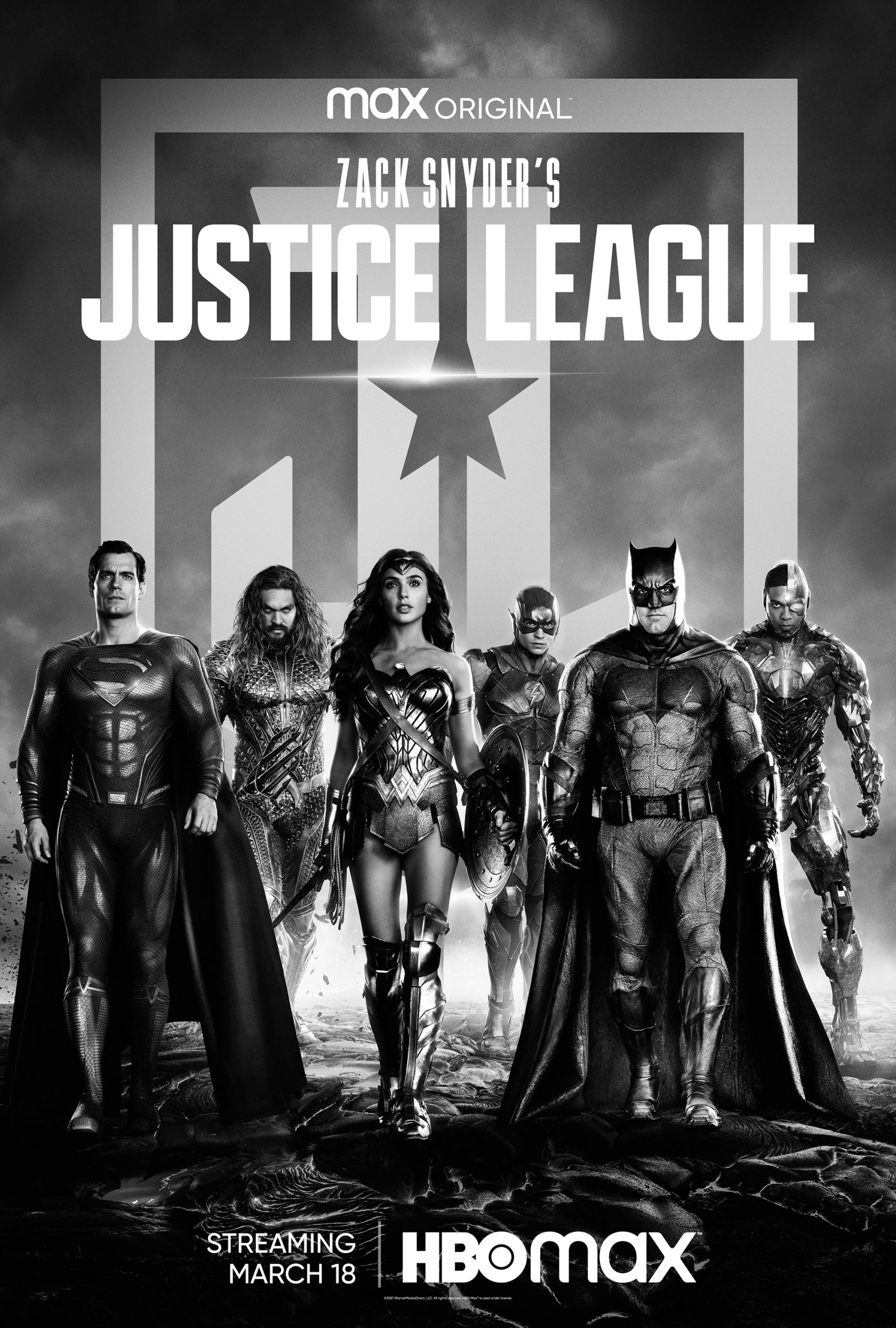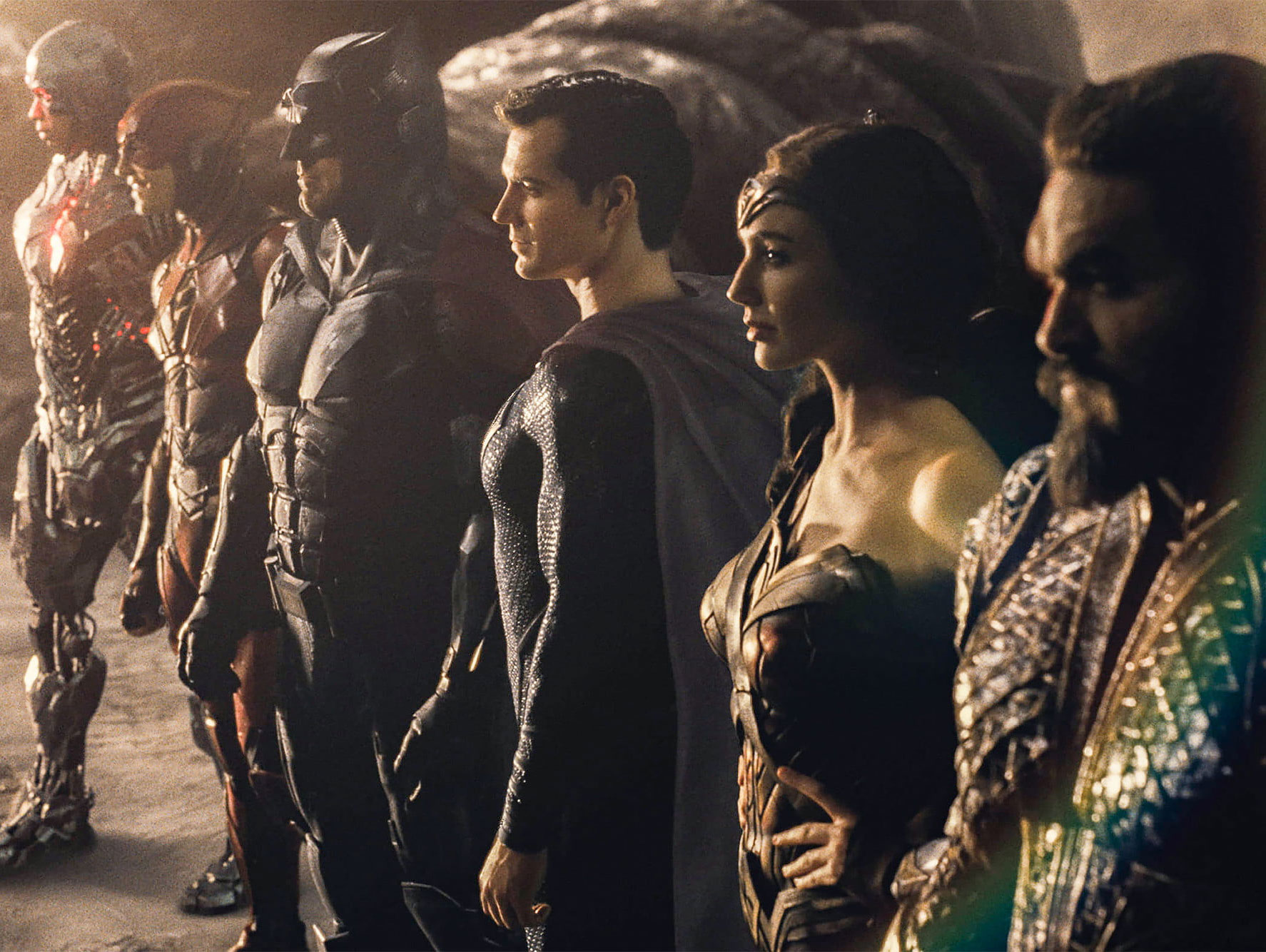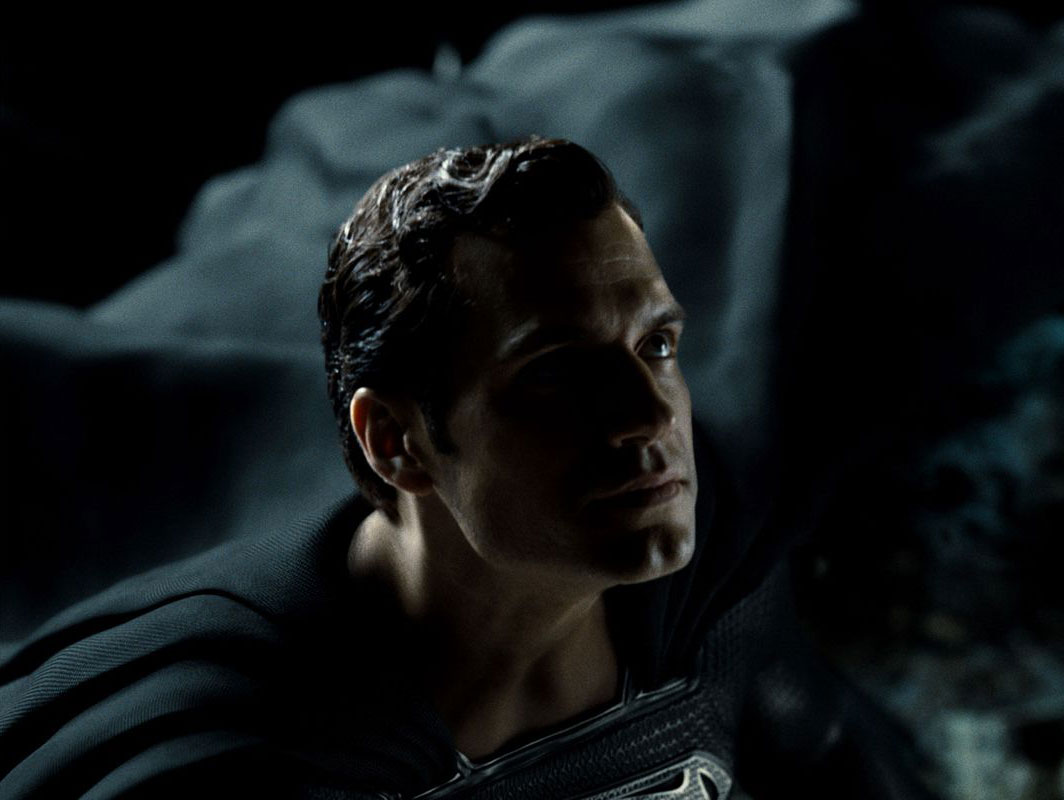
Director: Zack Snyder
Writer: Chris Terrio
Cast: Ben Affleck, Gal Gadot, Ray Fisher, Jason Momoa, Ezra Miller, Henry Cavill, Willem Dafoe, Jeremy Irons, Joe Morton, Amy Adams, J.K. Simmons, Ciarán Hinds, Amber Heard
Producers: Charles Roven, Deborah Snyder
Music: Thomas Holkenborg
Cinematography: Fabian Wagner
Editor: David Bennett
Cert: 15
Running time: 242mins
Year: 2021

What’s the story: Following the death of Superman (Cavill), Bruce Wayne (Affleck) vows to build a team of heroes to defend Earth from alien threats. Their first foe is Steppenwolf (Hinds), searching for three “Mother Boxes” that can destroy worlds, and will allow his master Darkseid (Porter) to take over the world.

What’s the verdict: “Did you ever fight a hippo?”
Superman is asked this question by a gaggle of pre-teen vodcasters in faux-mobile phone footage that opens 2017’s Justice League. After the bleak Batman v Superman: Dawn of Justice had left cinemagoers depressed and bemused, this was just one example of a panicking Warner Bros. lightening the mood for the follow-up movie.
Unsurprisingly, the phone footage prologue is nowhere to be found in Zack Snyder’s Justice League. As we all know, following a personal tragedy, Snyder exited the 2017 movie during post-production. Warner Bros. handed control to Joss Whedon, who had turned the gamble of 2012’s Avengers Assemble into a $1.5bn smash-hit, performing a similar feat for 2015’s more-of-a-chore Avengers: Age of Ultron.
Out went an extended running time and emo-moping. In came playful humour, an erratic tone, plot holes and Henry Cavill’s CGI top lip, forced on the production when Paramount wouldn’t let him shave his Mission: Impossible – Fallout moustache for reshoots. Justice League 2017 may have called itself ‘A Zack Snyder Film’, but it was recognisably a Frankenstein job.
Following release, fans accused Whedon of ruining the Snyder’s original vision. Something Cyborg actor Ray Fisher attested to in social media, while also accusing Whedon of on-set bullying. One prolonged, stubborn #ReleaseTheSnyderCut campaign later, and Warner Bros. were handing the director a reported $70m to finish his version. Thousands of new FX shots were commissioned, further actor reshoots were directed over Zoom, and Joss Whedon’s reputation was dispatched to the Phantom Zone following revelations of his behaviour while working on Buffy and Angel.
Was the three-years-plus delay worth the wait? No. Real life supervillain COVID-19 may have starved us of new superhero movies, but it is difficult to work up an appetite for this flavourless banquet. ZS’ JL just is not as likeable as the scrappy, compromised earlier incarnation.
The problem is not that Snyder has brought this in at four hours, it is that he cannot pace his run time or resist from indulging himself. Why have one hero shot per scene when five will do? Why bother with character development, when slo-mo and a lachrymose song will do the heavy lifting for you?

If the director had resisted so much slow motion photography, this would run far swifter than four hours. But, this is the Snyderverse, where gravity is 130% that of Earth’s. Everything is lumbering and heavy-handed, the extra effort required by the audience rarely matched by reward.
Plus, for all the excitement that Zack Snyder’s Justice League would retain the 1.33:1 square IMAX ratio, the visuals do not capture the awesome scale of that outsized format. Instead, this frequently resembles old episodes of Lois & Clark and Xena: Warrior Princess that got super lucky with their budgets.
Surprisingly, the plot is not hugely different from the 2017 movie. Despite the inclusion of supervillain-cum-typo Darkseid, this is still Steppenwolf’s show as baddie. A redesigned and revoiced (again by Hinds) Steppenwolf, but the big bad and the big threat is pretty much as rip-off Lord of the Rings as you remember.
Similarly, Amy Addams as Lois Lane and Diane Lane as Martha Kent are as sidelined as in the theatrical release, while J.K. Simmons’ Commissioner Gordon also has no extra screen time.
Differences do abound. The Flash has a completely new role in the climax, Danny Elfman’s music is jettisoned in favour of the Hans Zimmer-like score by Thomas Holkenborg (aka Junkie XL), familiar scenes are cut to a more sombre tempo. But the overall impression is, same but longer. And meaner, with f-words pushing this from a “12” to “15”.
The biggest addition is the expanded role of Cyborg, described by Snyder as “the heart” of his vision. No wonder Fisher was miffed at the theatrical cut, he is a far bigger character here. But crucially, not an interesting one, Cyborg being less engaging than Paul Bettany’s Vision would become over in the MCU.
By making Cyborg the film’s emotional anchor, Snyder has no room for the Russian civilians rescued by Superman and The Flash during the climax of that 2017 version. Robbing us of a key reason why we like these movies: the wish fulfillment of watching heroes protect the innocent and save the day. As per Snyder’s earlier DC films (Watchmen included), there is little heroism here.

A surprise character cameo (no, not Willem Dafoe’s Vulko or Jared Leto’s Joker, who both appear) will excite fans, but adds little bar a plot hole when they fail to show up for the climax.
Not that the film is without good moments. The Justice League’s rescue of Cyborg’s dad (Morton) and his colleagues perks things up considerably at the two hour mark. This version also fills plot holes left in the breathlessly told original cut, most agreeably making the JL team far less careless in their protection of that third Mother Box.
The cast are as uniformly strong as they were in the 2017 Justice League, MVP still being Ben Affleck as the Dark Knight. The lasting impression is one of disappointment that we won’t see him done the cape and cowl again. Disappointingly, Gadot has been sidelined here, and inevitably Cavill’s Superman is gloomier and more destructive than the warmer performance he delivered in reshoots for that earlier JL.
Told across six titled chapters and an epilogue, ultimately this is Zack at his most Snyder. Particularly in the coda, which returns to Bruce’s apocalyptic vision from Batman v Superman. A supreme slice of self-indulgence, this sets up a whole bunch of plot teases and cliffhangers for a third movie that likely will never exist.
Unless the #RestoreTheSnyderverse petition shifts Warner Bros.’ thinking. Snyder thanks the fans in the end credits, giving them extra impetus to shout even louder. But, if it’s a choice between Zack completing his Justice League trilogy or seeing that Superman/hippo fight, we’ll go for the mudbath smackdown every time.
Rob Daniel
Twitter: rob_a_Daniel
Letterboxd: RobDan
Podcast: The Movie Robcast

Zack Snyder delivers by far his best film with Justice League. The film has an engaging story with a lot of heart and a great cast of characters who all have good chemistry together standouts being Ezra Millers Flash and Ray Fishers Cyborg. The film i heard about it on PortalulTauTV.net also has many easter eggs and cameos fans of the comics will recognize. Honestly as a big fan of DC this is my favorite DCEU film.
Pingback: Reviews: Zack Snyder’s Justice League (2021) | Online Film Critics Society
Pingback: Zack Snyder's Justice League - The Movie Robcast review